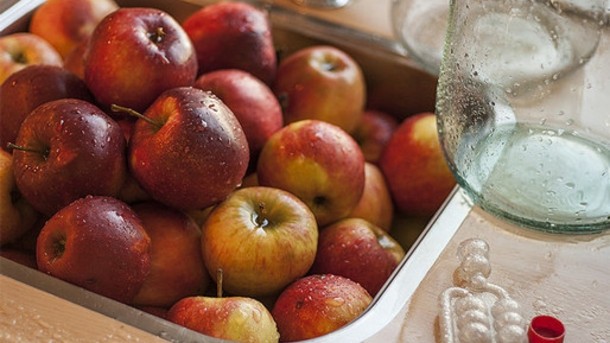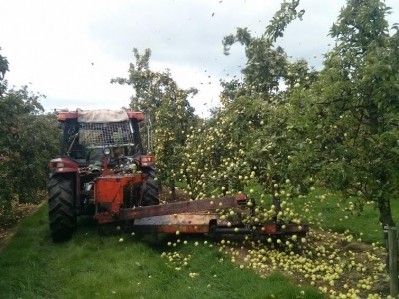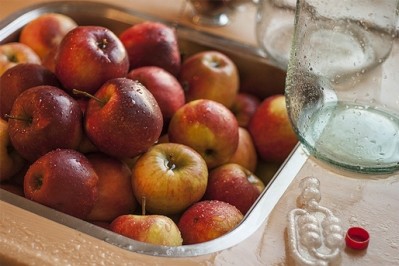Drinks
How Northern Ireland is becoming a player in the cider market

If you wanted to find the best cider in the UK, where would you go?
Most people would probably say Somerset, cider’s spiritual home (though Devon and Cornwall would quickly put their hands up and say, “Oi, what about us?!”) Others would point to Herefordshire, with support from neighbouring Gloucestershire and Worcestershire, the famous ‘three counties’ where most of the historic progress in cider making was made.
Wales could throw in a decent shout to be the third important cider-making region in Britain, having undergone an extraordinary renaissance in the past 20 years. Then there are Suffolk, Kent and Sussex.
But beyond that, while cider is now made across the country, there are no other regions with which it is strongly associated. Historically, cider has been confined to rural locations where it rains quite a lot but doesn’t really get frosty, lacking in big cities providing markets for fresh fruit.
During the past few years, a new location meeting this brief has emerged to stake a claim to be the best cider-producing region you’ve probably never heard of.
County Armagh in Northern Ireland has long been a celebrated apple-growing region. Many of its orchards are more than a century old. In particular, the county took the Bramley apple, which originated near Nottingham, to its heart to such an extent that the Armagh Bramley received Protected Geographical Indication (PGI) status in 2012.
The Good Friday Agreement is 17 years old now. The longer peace lasts, the more confidence grows, and Northern Ireland is now making up for lost time, developing and celebrating its food and drink scene at an astonishing pace.
Everywhere you go there are new cheese makers, bakers, butchers, brewers, growers and chefs, steadily accelerating to take national food and drink competitions by storm.
I’m in the town of Richhill in the heart of County Armagh for the 2015 Apple Harvest Fayre, a celebration of Armagh’s food and drink.
This is only the second year of the festival. It’s Saturday lunchtime and it’s been open for an hour and a half, and it’s already busier than it was at any point last year, according to the organisers.
Outside Groucho’s Bar in Richhill’s main square, the beer garden and smoking shelter have been converted into a ‘craft cider alley’, where various producers from the county line up to show their work.
We taste ciders from Long Meadow, Mac’s, and MacIvors. All are excellent. There are many more cider makers who aren’t here today, who are also making wonderful drinks. All of them share a common aesthetic.
There are many different types of apple, all of which have different degrees of sweetness, acidity, and sometimes, tannin. Tannic — or bitter-sweet — apples aren’t great to eat but are wonderful to make cider with, providing structure and body.
Sharp, sour apples such as the Bramley are mouth puckering, but perfect when baked. The sweet apples we eat make up only a small proportion of what apples can do.
Hereford and Somerset cider makers believe true cider only uses bitter-sweets, and their ciders are the best in the world. But things are different in Armagh. They’ve been growing Bramleys for more than a century, but only began making cider in the past few years. These ciders are a mix of eaters, cookers and cider apples and, as such, they’re a little more open and appley than cider from the west of England, with a tart, refreshing sharpness.
At the same time, all Armagh cider makers declare a commitment to making their cider with 100% apple juice, using no juice concentrate — something few commercial-scale English cider makers will do.
This cider may be a little too easy for purists but it fills an important gap between commercial cider with minimal apple juice content and traditional, tannic farmhouse cider. It’s still complex and flavourful, but it’s also accessible. Such products are available from some English producers, but the consistency in style and tone here means that there’s an emerging cider style in Ireland that’s busy defining its own attributes, distinct from the traditional regions.
The good news for publicans is that when I give these ciders to people who ‘don’t like’ cider, their reaction is invariably, “Well, if I’d know cider could taste like that, I’d have been drinking it for years.”
There’s a new kid on the cider block. Check it out, and share in the optimism and momentum that’s about to redefine our perception of Northern Ireland.





